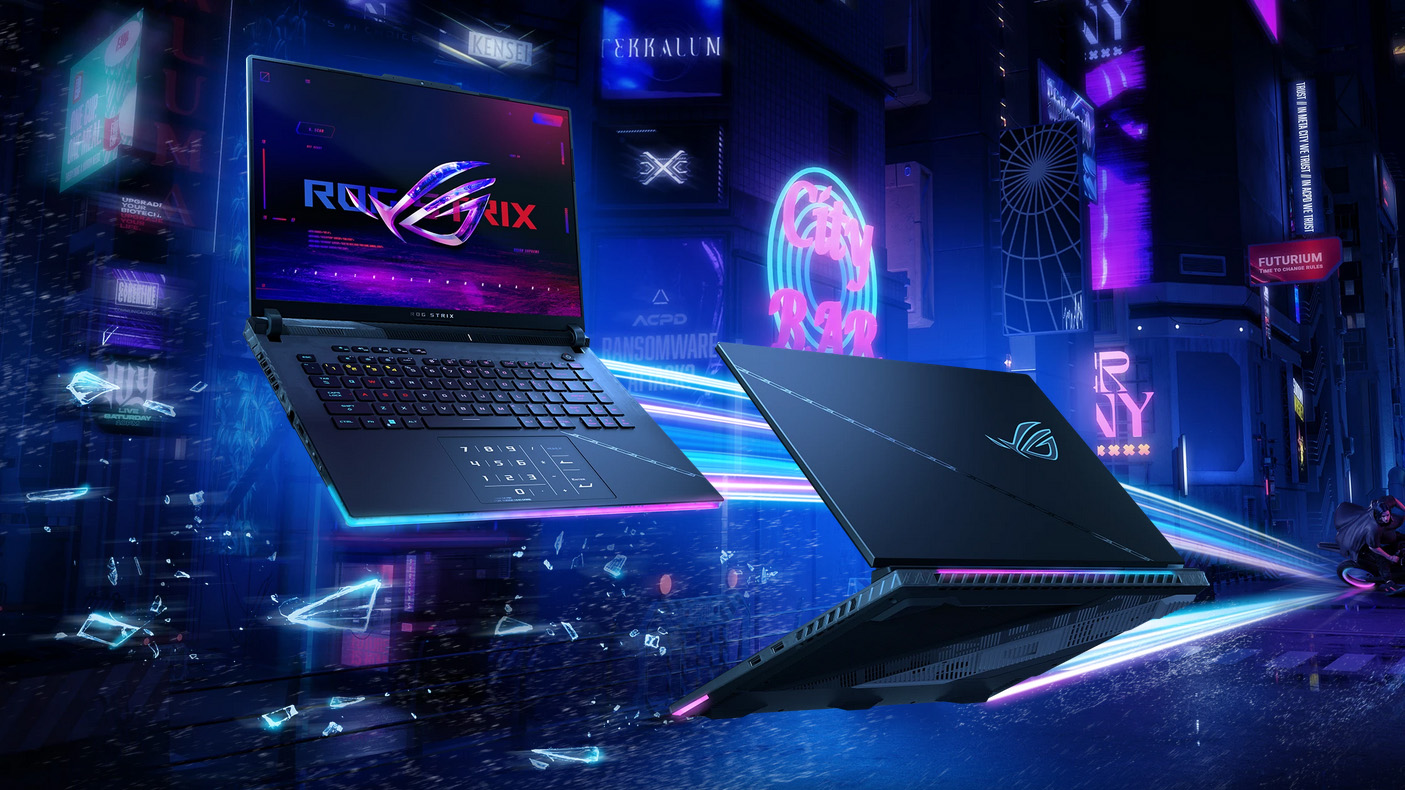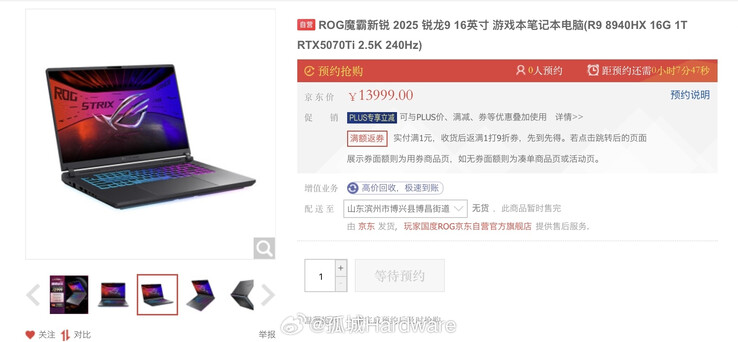AMD Dragon Range Refresh CPU specs confirmed via early retail listing — Ryzen 9 8940HX sees 100 MHz increase
Details of AMD's poorly kept secret continue to leak ahead of the official announcement.

AMD's upcoming Dragon Range Refresh CPU family has had some new details revealed by a recent early listing on Chinese retailer site JD.com. The existence of the Dragon Range Refresh, or the Ryzen 8000HX line, has been known about since MSI leaked the news in January.
The JD listing for an Asus laptop featuring the upcoming ROG Strix G16 2025 has been widely shared through screenshots on Weibo. The screenshot below has been widely shared and confirmed by numerous places. The new G16 lists a Ryzen 9 8940HX as its CPU, alongside an RTX 5070 Ti, 16GB of RAM and 1TB of storage.

The Ryzen 9 8940HX, a part of the presumed Dragon Range Refresh, is expected to replace the Ryzen 9 7940HX. The G16 listing continues beyond the screenshot to share that the 8940HX will be a 16-core/32-thread chip that boosts up to 5.3 GHz. That represents a 100 MHz improvement over the 7940HX's 5.2 GHz boost clock, typical for a generational refresh.
We've seen the Ryzen 9 8940HX before in a premature Best Buy listing for the same Asus laptop, also paired with the then-unreleased RTX 5070 Ti. The prices also line up, with the ¥13,999 price tag seen above converting exactly to the same $1,899 price tag the Strix G16 carried in January. This hopefully will not be the cheapest way to acquire an 8940HX, as the 7940HX can currently be had for under $1,200 in laptops and mini PCs, though Asus's Strix line often carries a luxury tax that should be accounted for.
AMD, strangely enough, has still not officially announced Dragon Range Refresh. MSI first dropped a premature press release featuring the 8000HX series during CES 2025, with Asus listing the Strix G16 2025 a week later; both listings were quickly removed after AMD declined to issue a release on the new CPUs.
Now that the Strix G16 has been listed a second time, perhaps also erroneously, it remains for AMD to announce their refresh line or remain secretive. The Dragon Range Refresh has definitively had its thunder stolen, though what thunder it could've had as a refresh of a two-year-old laptop-only CPU family no one knows.
Get Tom's Hardware's best news and in-depth reviews, straight to your inbox.

Sunny Grimm is a contributing writer for Tom's Hardware. He has been building and breaking computers since 2017, serving as the resident youngster at Tom's. From APUs to RGB, Sunny has a handle on all the latest tech news.